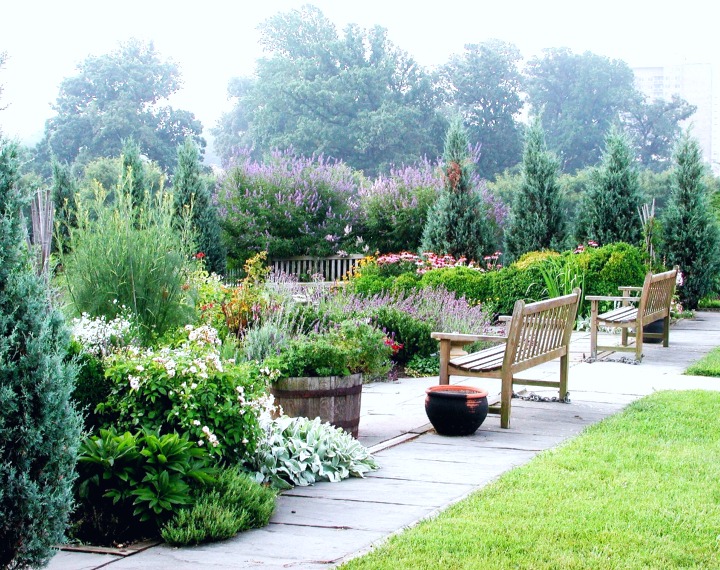What are the Benefits of Sensory Gardens in Care Homes?
 There’s something about having a beautiful outdoor space to spend time in that helps us to clear our minds while improving our mood. A garden is not only somewhere that is beautiful to see and spend time in, but also somewhere that enriches our senses, having a therapeutic effect on the mind.
There’s something about having a beautiful outdoor space to spend time in that helps us to clear our minds while improving our mood. A garden is not only somewhere that is beautiful to see and spend time in, but also somewhere that enriches our senses, having a therapeutic effect on the mind.
It’s this therapeutic effect that gardens have that can make them an ideal place for dementia sufferers to spend time in, as they can be designed to be a sensory space. If your care home has an area of outdoor space that isn’t being used, consider turning it into a sensory garden for your residents and their visitors to enjoy.
What is a sensory garden?
A sensory garden is simply a garden that’s been designed with the senses in mind and is somewhere that acts to enrich each and every human sense. The senses that the space should focus on include sight, sound, smell, touch, and taste. The fantastic thing about sensory gardens (and sensory spaces in general) is that they can help people with dementia to reconnect with lost memories because our memories are so closely linked to our senses.
How to create a sensory garden:
Creating a beautiful sensory garden in your care home is easier than you would think, especially if you opt to get everyone involved, from your team members to your residents. Ask for ideas and suggestions for what plants to include as well as for design ideas for the space. You may find that some of your green-thumbed residents may want to help out with the project from start to finish, and may also want to help to maintain it, which is perfectly fine as it could make a great hobby for them.
When it comes to selecting what to put in your sensory garden, think about plants that stimulate the senses in some way. Ideally, you want to incorporate plants that are vibrant in colour, such as bright, pretty daisies, have a beautiful smell, like roses, and have a unique feel to them, such as Lamb’s Ear, for instance.
For plants that are visually appealing, don’t just think about colour, pick plants that are unique in some other way. A plant that has a unique leaf, a strange stem, or a pretty pattern could be ideal. You want to pick plants that are eye-catching because of their uniqueness. It’s not just about flowers; you can also add other visuals like a water feature, for instance, or coloured solar lights.
Smell is one of the senses that studies show is linked deeply to our memories, which is why it’s so important that your sensory garden incorporates lots of different smells. Don’t just think about floral smells but also foliage that has a smell and herbs like mint, rosemary, and basil.
If you want to incorporate taste into your sensory garden, adding a herb garden could work well. As could incorporating some fruit trees and bushes into the space, to allow your residents to get as much out of the sensory garden as possible.
To incorporate touch into your sensory garden, make sure to plant a variety of plants and shrubs. As well as soft leaves and petals, make sure to add trees with scratchy bark, areas of moss, and a variety of leaf types. To prevent injuries steer clear of plants with spikes or thorns.
When it comes to how to incorporate sound into your sensory garden, you may not be sure how to do this. All it takes is a selection of different plants that make noises when swishing in the breeze. You could also opt to add some wind chimes to your sensory garden, as these sound soothing when the wind clangs them together.
Make sure that when it comes to creating the sensory garden for your care home that you get the layout just right and ensure that it is accessible and safe for everyone.
We had a look at a few care homes that have sensory gardens - have a read by clicking on the links below:





